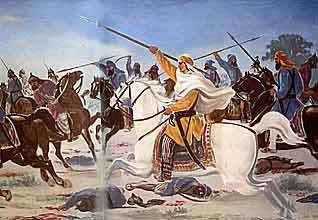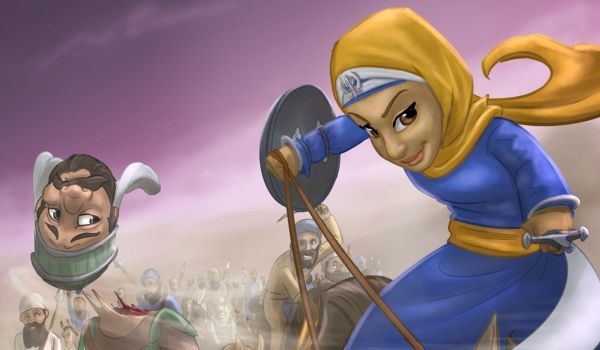Name Mai Bhago | ||
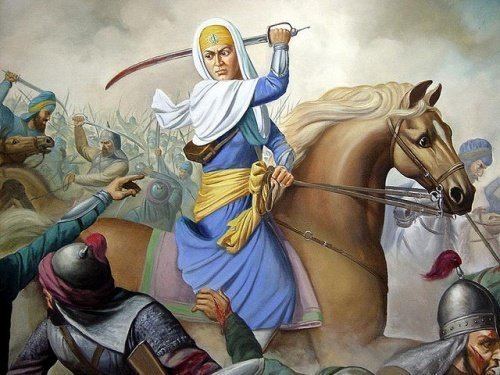 | ||
KAUR - Mai Bhago Saakhi (ਪੰਜਾਬੀ)
Mai Bhago was a Sikh woman who led Sikh soldiers against the Mughals in 1705. She killed several enemy soldiers on the battlefield, and is considered to be a saint by Sikhs. Mai Bhago was a descendant of Bhai Pero Shah, the younger brother of Bhai Langah, A Chief of 84 villages who had converted to Sikhism during the time of Guru Arjan Dev Ji (1563–1606), the fifth Sikh Guru.
Contents
- KAUR Mai Bhago Saakhi
- Profile in Courage Mai Bhago Sikh Dhadi Raag Song
- Early life
- Mughal confrontation
- References
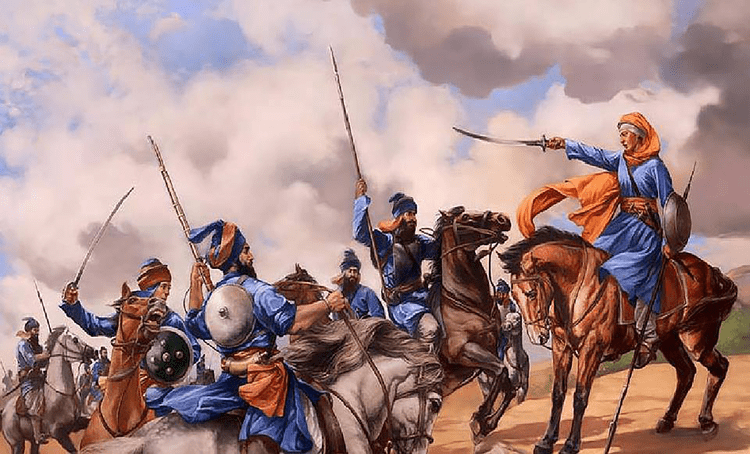
Profile in Courage: Mai Bhago: Sikh 'Dhadi Raag' Song
Early life
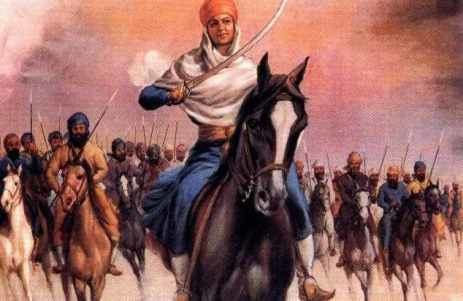
Mai Bhago was born in ancestral village of Jhabal near Patti, in the present-day Tarn Taran district of Majha region of the Panjab. She married Bhai Nidhan Singh of Patti. Mai Bhago was a staunch Sikh by birth and upbringing. and she had brothers who were also staunch Sikhs. When she was young, her parents took her to Anandpur Sahib to glimpse Guru Gobind Singh Ji (1666–1708), the 10th Sikh Guru.
Mughal confrontation
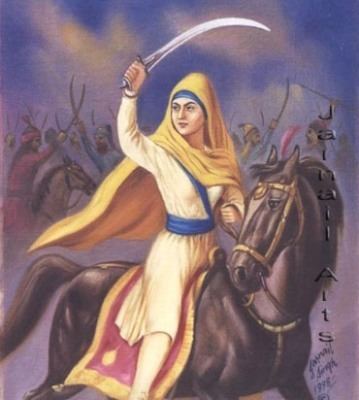
Mughals and hill chiefs had surrounded Anandpur and were demanding it be evacuated. A group of 40 Sikhs, led by Mahan Singh, asked Guru Gobind Singh Ji to give them permission to fight back with the Mughals surrounding Anandpur Sahib. However, Guru Gobind Singh ji told them to not to fight back. Even though Guru Ji told them not to fight at that time, they still demanded that they want to fight and teach Mughals a lesson for surrounding Anandpur Sahib and will not wait any longer or else they do not consider themselves as Sikhs of the Guru. The Guru Ji told them to stay put as the time was not right to fight but the forty Sikhs disagreed. So all forty Sikhs (except one: 'Bedava') wrote their names on a document which mentioned that they are leaving since Guru Gobind Singh Ji did not let them to fight with Mughals, and therefore left Guru Gobind Singh Ji. Mai Bhago was distressed to hear that some of the Sikhs of her neighbourhood, who had gone to Anandpur to fight for Guru Gobind Singh, had deserted simply because Guru Ji did not give them Hukam to fight. She criticised them openly, though admired their eagerness to fight back with Mughals, she told them to always follow Guru Ji's Hukam. There is always a reason behind Guru's words or Hukam. After listening to her, the hot-headed Sikhs were ashamed that they did not follow their Guru's Hukam and decided to go back to Anandpur Sahib immediately. Mai Bhago also joined them, and persuaded them to meet with the Guru and apologise to him.
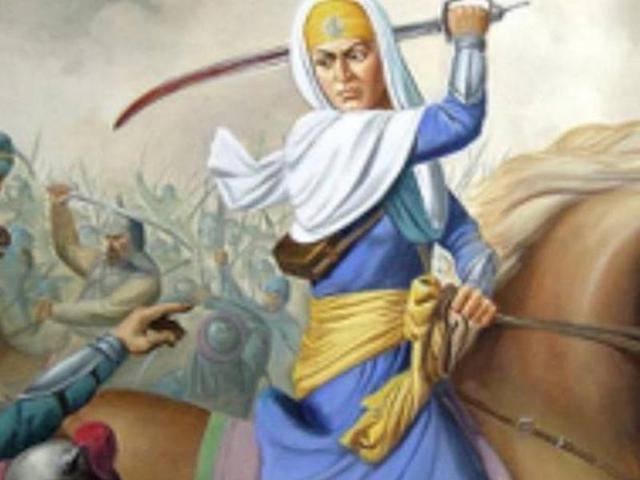
A messenger arrived with an oath signed by Aurangzeb on a copy of the Quran, assuring the Guru that if he came out of the fort, permanent peace would be negotiated on honourable terms. The oath of the Emperor was further supported by signed oath by all the Generals of the Mughal army and the Hill Chiefs. Guru Gobind Singh did not trust these assurances, but his mother and the disciples counselled him to accept such solemn oaths and meet the Emperor.
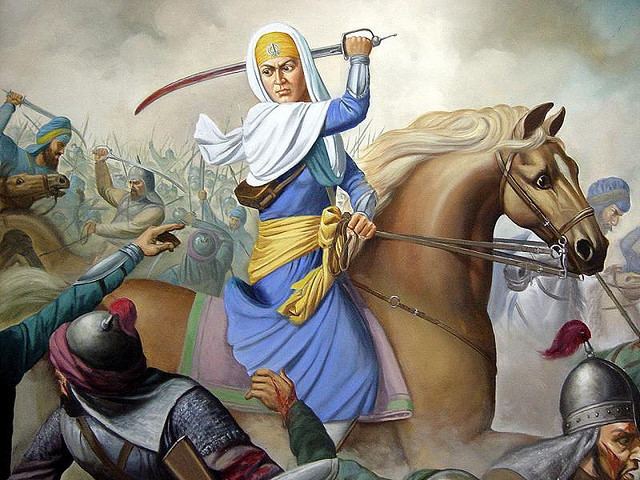
Meanwhile, Guru Gobind Singh evacuated the fort of Anandpur, and his children had been separated in the retreat by the betraying Mughal army and the Hill Chiefs. The two youngest ones, Sahibzada Zorawar Singh Ji and Sahibzada Fateh Singh Ji, had gone along with their grandmother (mother of Guru Gobind Singh Ji), while the elder two, Sahibzada Ajit Singh Ji and Sahibzada Jhujhar Singh Ji, had gone with their father. At the battle of Chamkaur, the Guru's elder sons were killed and attained martyrdom. The Guru himself was saved by five Sikhs, and he and his forces evacuated Chamkaur. Guru Gobind Singh's forces travelled day and night through the jungles of the Malva region with the imperial Mughal forces of Aurangzeb in constant pursuit. The Guru had reached the village of Khidrana, when Mai Bhago and the men she led stopped near the dhab, or pool, of Khidrana and were overtaken by the imperial army pursuing the Guru. Mai Bhago and her men challenged the pursuing host, fought furiously, and eventually forced it to retreat, while the Guru's forces showered arrows onto the Mughals from nearby high ground. When Guru Gobind Singh visited the battlefield, he found all dead except Mai Bhago and the previous leader of the deserters, Mahan Singh. Mahan Singh, who had been seriously wounded, died as the Guru took him into his lap. All forty of the Sikhs who were coming to redeem themselves died and attained martyrdom in this pitched battle.

Guru Gobind Singh blessed those forty dead as the Forty Liberated Ones. He took into his care Mai Bhago, who had also suffered injury in the battle. She thereafter stayed on with Guru Gobind Singh Ji as one of his bodyguard, in male attire. After the death of Guru Gobind Singh Ji at Nanded in 1708, Mai Bhago retired further south. She settled down at Jinvara, 11 km from Bidar in Karnataka where, immersed in meditation, she attained a ripe old age. Her hut in Jinvara has now been converted into a place of worship and learning, Gurdwara Tap Asthan Mai Bhago. At Nanded, too, a hall within the compound of Takht Sachkhand Sri Hazur Sahib marking the site of her former residence is known as Bunga Mai Bhago.
